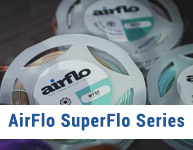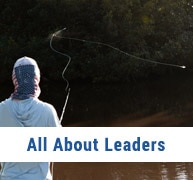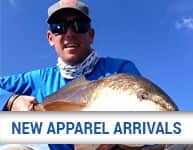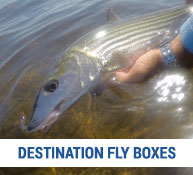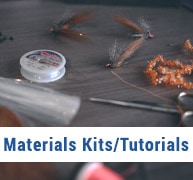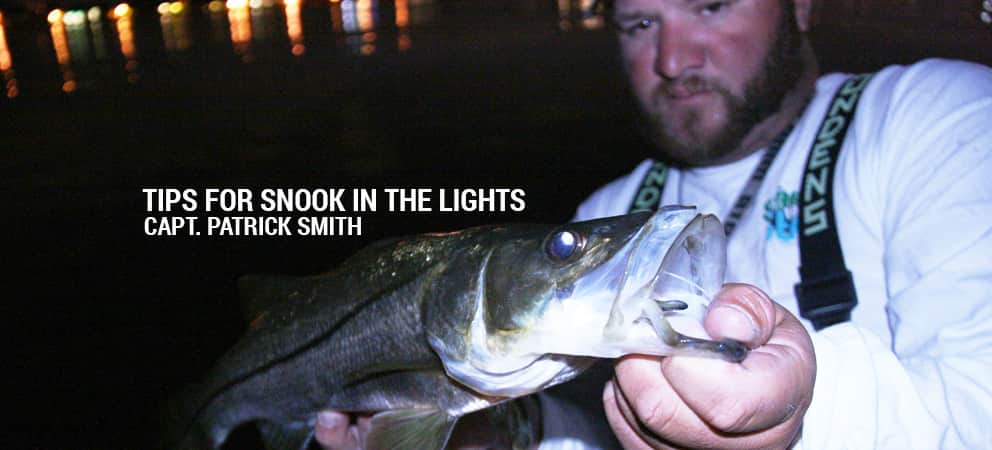Grab some coffee and make sure your navigation lights work, because chasing snook under the stars is one of the most addicting ways to spend a night. With the amount of docklights and bridges with perfect shadow lines, there are almost endless fishing opportunities. Imagine pulling into the ramp and seeing a couple of boats, or even better, no other boats. This is the norm especially if there is any kind of unfavorable weather. However windy, rainy, and even cold conditions have actually proven to be some of our best nights of fishing. In this article I’m going to lay out some of the tips, tactics, and tackle that I use with great success on these beautiful fish that will absolutely tear up your gear and sometimes leave you wondering what just happened. But no matter what, they always seem to leave an ear to ear smile on your face.
Depending on where you are fishing in the state, there are many other species that can pop up in the Florida lights including redfish, seatrout, tarpon, ladyfish, lookdowns, and jacks. I’m going to focus on snook as the same flies and tactics will produce all of the above species.
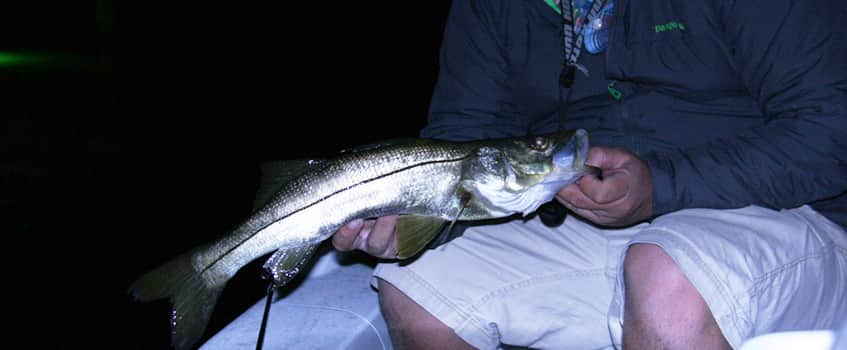
Equipment
There are three setups I bring for a night of fishing.
First is a 6 weight with a floating or a clear intermediate line, a tapered leader, and a 20 lb. bite tippet. This is my go-to size rod for dock light fish that average 24-28 inches. The lighter line allows for quiet casting and is more forgiving to new anglers that might make a cast right on top of the fish. You will lose some battles, but to me that’s ok and all part of the game.
The next would be an 8 weight, set up the same as the 6 weight, with the exception of a 30 lb. bite tip. The 8 weight is a great rod for beating the wind and also helps pull the fish on the upper end of the slot out of the barancles. I almost only use it on the windy nights when the chop will cover up the sound of the line laying down and not spook the easily scared fish. Third I would bring a 10 weight with an intermediate line, a strong tapered leader, and a 30 lb. bite tippet. This setup would mainly be used around the bridges and on docks with pronounced shadow lines where bigger fish tend to hang out and more power is needed to pull them from the pilings. This size rod also gives you a better chance of landing the occasional tarpon that might pop up.
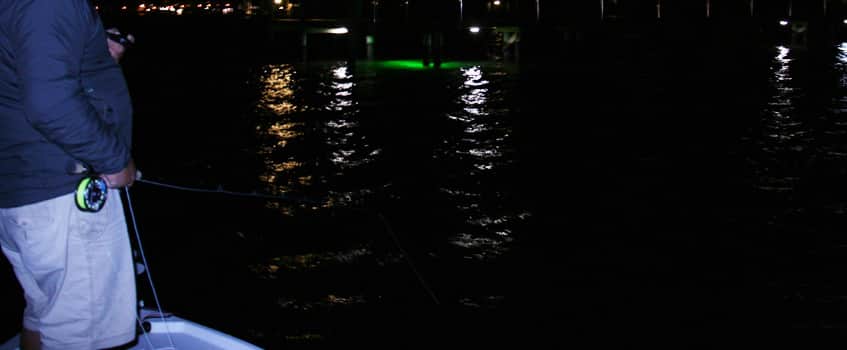
Flies
When it comes to flies for snook around docks at night, it’s good to remember the phrase “elephants eat peanuts”. Smaller is better. #6s, #4s, and #2s are normal as long as you choose a strong hook. You will be able to catch a lot larger fish than you might think on flies this small. The most productive patterns for us are Whats Up Docks, Schminnows, Gummy Minnows, Eat Mes, Midnight Minnows, Mini Minnows, and EP Micro Minnows. Pretty much anything that imitates tiny shrimp and small glass minnows will work. If you live in an area that has a shrimp flush on a certain tide, then a shrimp or crab would be a great pattern to start with. Around bridges you will mostly want to throw bigger batifish and shrimp patterns that move more water.
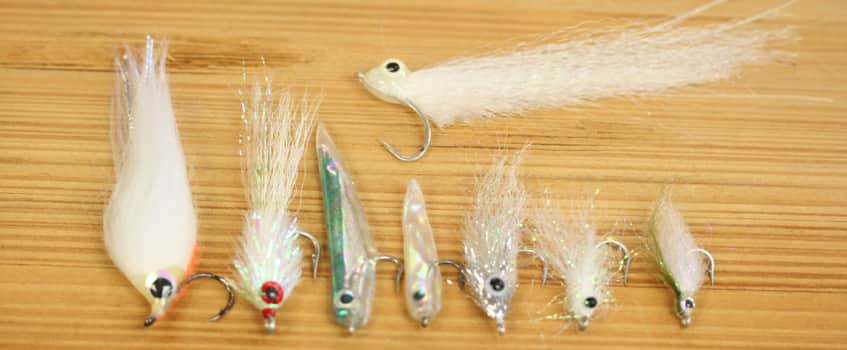
Types of lights
The type of light makes a difference. I personally love an overhanging incandescent street light style light, because it seems to attract more bait and snook. I tend to get a lot more cooperative fish in these lights.
New technology has led to more underwater LED lighting, which are great for watching fish but the snook seem to be a little more wary around these docks.
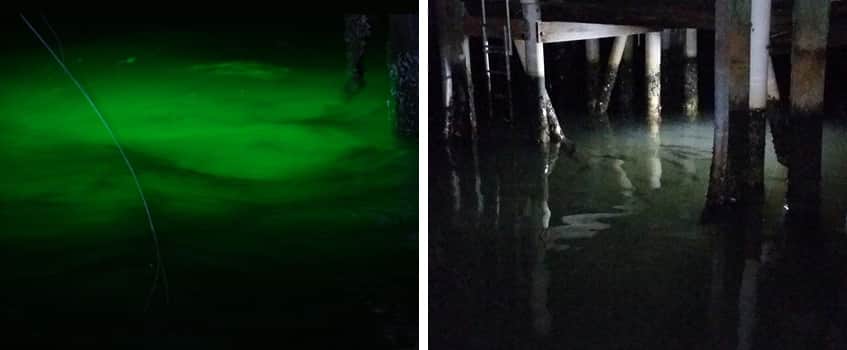
Weather
Weather is a factor for me, but only when choosing where to fish. Wind strength and direction will dictate which side of the river I fish on because I would much rather be blown away from the dock than towards it. One of the best parts of this type of fishing during the summer is beating the heat. In the winter some of the lights will be warming stations for the fish and the later you go the more active the fish will be.
Tides
Tides are probably the most important part of this article. You have to understand tides and what they do for the fish. In my area I can catch fish on moving water. That means fishing is good on both the incoming and outgoing because there is nothing significant happening on either tide. Some areas have back bays and rivers that might flush shrimp or crabs on an outgoing tide, which will make a difference in what you use and how it’s presented.
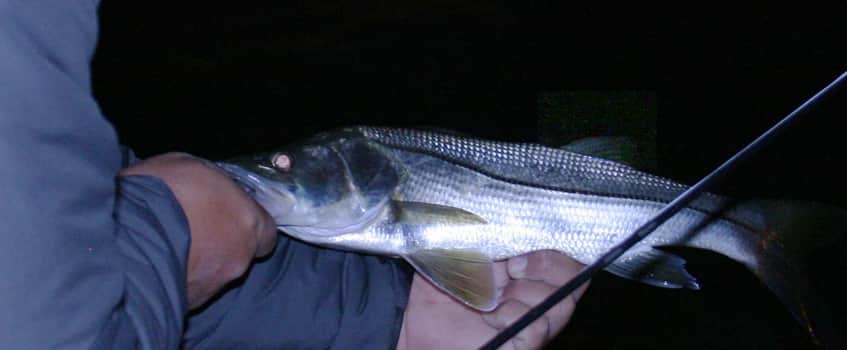
When you pull up to a light shut down your outboard as far out as you can and approach with the trolling motor. Resist the urge to start casting, quality over quanity will make you a lot more successful. Try to see the fish and what they are doing. If the snook are swimming around in circles, or not facing into the current, it doesn’t mean they wont eat but they aren’t in feeding mode. If you see them sitting shoulder to shoulder, nose into the tide, you are in business and should be getting tight in no time. Always make your presentation up current of the fish and allow it to sweep back naturally. I also encourage people to let bad casts drift through and only be picked up after clearing the fish to keep from spooking them. Try to make as gentle of casts as you can and you will get multiple shots at the fish. A good practice is to always try to land your fly line in the dark.
It’s good to remember that we are fishing behind people’s houses and catching fish on lights they pay the electric bill for, so it’s always good to be respectful and thankful. If there is a dog barking like crazy, or people hanging out on the dock, keep moving and come back later. The fish will be there. If you bother the homeowner they might flick the light switch and that is bad for everyone.
The more time I spend writing this, the more I want to be out there fishing. I suggest you find yourself slinging bugs under the moonlight sometime soon.
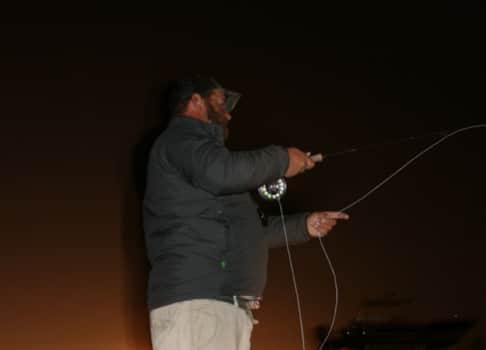
By: Capt. Patrick Smith
Swamp To Sea Guide Service
- 561-503-0848
- [email protected]
- Capt. Smith’s Guide Referrals Page

